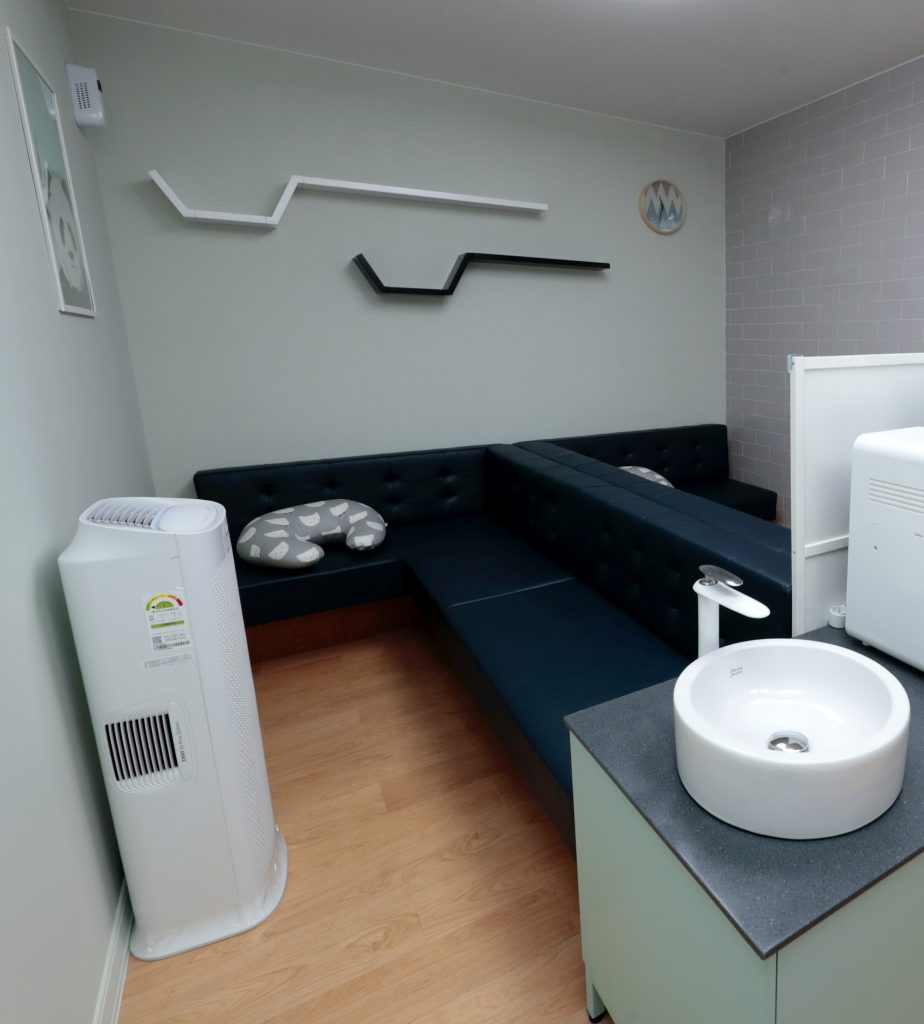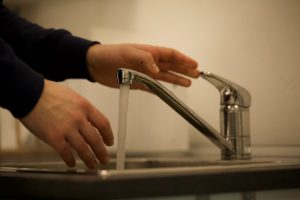Air purifiers and air scrubbers are on this rise in popularity, mainly as a response to indoor air pollution. This comes partly as a response to the realization that indoor air can have 2 to 5 times, sometimes even 100 times, more pollutants than outdoor air.
With this comes an even higher risk of allergies, asthma, pulmonary diseases, and lung cancer (in extreme cases). These health concerns have grown, as most people are spending more than 90% of their time indoors—at home, school, work, restaurants, or when shopping.
So, when it comes to purifying air, what should you use for your home or commercial space: an air scrubber or an air purifier?
Let’s explore how both function and why you should choose either or the other.
Air Scrubber vs Air Purifier: What is an Air Purifier?
Also known as an air cleaner, an air purifier is a device that removes contaminants from indoor air. Essentially, it sanitizes the air from pollutants, toxins, and allergens.
Air purifiers equipped with HEPA (High-Efficiency Particulate Air) technology filters potentially remove 99.7 percent of airborne contaminants in the home environment.
The devices come in handy in maintaining clean air for commercial businesses, construction sites, and other projects that require a “safe breathing” zone. For asthmatic people, they eliminate the compounds that aggravate symptoms or those that trigger respiratory infections.
How Do Air Purifiers Work?
Air purifiers are fitted with one or multiple filters and fans. The fan—sometimes a system of internal fans—sucks in air, which then passes through the filters. As air flows through, the filters eliminate all contaminants such as dust, bacteria, pollen, mold, and other elements, then disperse clean air.
They’re different from humidifiers and oil diffusers, which add compounds to the air. They also differ from filters in that while filters remove particles, purifiers can sanitize them.
Types of Air Purifiers
The type of air purifier you choose determines the exact particles removed from the air. The way different purifiers function also varies. For instance, some have filters that trap particles as air flows through them, while others neutralize compounds without filtering the air.
Most HVAC air purifiers are fitted with HEPA filtration, but some contain other filters such as carbon and UV light. Others have a combination of two or three filters.
Here are the most common HVAC air purifiers:
- HEPA Filters: The most common HVAC air purifiers use HEPA filtration to capture particles as small as 0.3 microns in size. These particles are not visible by the human eye. The smallest particles visible to the human eye are between 50 to 60 microns in size.
- Activated Carbon: These air purifiers use carbon filters that trap odors. Unlike the HEPA filters, they can’t trap viruses and bacteria on their own.
- Electrostatic Precipitators: They use high voltage electrical energy to charge particles as they pass through the filters. The main downside with these filters is the particles accumulate in the electrostatic plates as they’re collected. For the filters to work efficiently, the plates need to be frequently changed, which increases their maintenance cost. They’re also feared to release ozone, a gas that potentially damages the lungs.
- Ultraviolet Light (UV) Air Purifiers: They use UV rays to kill bacteria and germs in the air. Some UV air cleaners release ozone, so it’s best to check before buying one. Clover Contracting UV air purifiers are certified for maximum efficiency.
- Ozone Generators: Most of these air cleaners absorb odors but release significant ozone. They’re commonly used in hospitality, especially in hotels.
As you can see, to get the best of purifiers, you need to combine filters. For instance, to get an air purifier that captures minute pathogens and eliminates odor, try purifiers with HEPA and activated carbon filters.
Air Scrubber vs Air Purifier: What is an Air Scrubber?
Sometimes known as negative air machines, air scrubbers are highly similar to air purifiers in functionality. Like air purifiers, they are fitted with HEPA filters allowing filtration of pollutants as little as 0.3 microns in size with a 99.97 percent efficiency.
How Air Scrubbers Work
As air flows through the air scrubber, the small metal tubes produce negative ions that attach to both airborne and surface particles.
In the air, the negative ions have one goal: to attach with the positively-charged particles such as pollen, bacteria, mold, and other allergies. The bonding creates larger and heavier particles making them difficult to float. Instead, they fall on the ground or surfaces. In so doing, nothing escapes; the negative ions capture even the smallest particles that are onerous to capture with air filtration. When the fan is turned on, it pulls the larger compounds from the floor or surfaces to filter in the system.
Since air scrubbers are more heavy-duty, they are an excellent choice for construction sites and commercial locations but can be used in homes as well.
What is the Difference Between an Air Purifier and an Air Scrubber?
Air purifiers and air scrubbers both improve air quality. However, they have some unique characteristics that set them apart that you need to consider when choosing the right one for your needs.
The main difference between the air cleaner and air purifier is how and where they capture particles. Air purifiers are designed with filters to capture airborne particles as air flows through the equipment. They do not get rid of on-surface particles.
Air scrubbers use negative ions to attach both airborne and surface particles. These particles rest on surfaces and the floor making it easier to filter. Think of air scrubbers as devices that do the heavy lifting for your surfaces.
Air Purifier vs Air Scrubber: Which is Right for You?
If you’re looking to purify the air in your space, both air purifiers and air scrubbers will get the job done. In their unique functionality, they deep-clean the air eliminating up to 99 percent of particles.
The best one for you will depend on your needs. Air purifiers have the advantage that the cleaning process occurs inside the device, leaving the air fresh immediately after installation.
The downside with them is that they require regular maintenance. They also need regular changing of filters for them to function properly. But that shouldn’t be much of a problem considering filters generally cost about $100 per year if changed every three to four months.
By comparison, air scrubbers need no maintenance. Air purifiers have a peerless advantage in that they cleanse particles on surfaces like countertops, walls, and doorknobs. Air purifiers will only sanitize airborne particles. As such, if both air and surfaces are of importance to you, an air scrubber is a sure bet.
Final Words on Air Cleaner vs Air Purifier
With people increasingly spending more time indoors, it’s becoming vital to put purification technologies–air purifiers and air scrubbers—to good use. Choosing the one that’s right for your home or commercial space will depend on your particular needs. As air purification experts, we will help you choose the right HVAC air purifier systems. From fixing the units, cleaning, to changing filters, don’t hesitate to contact us.




